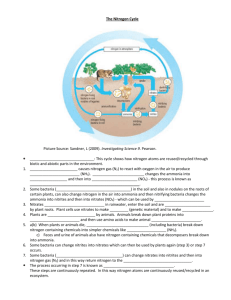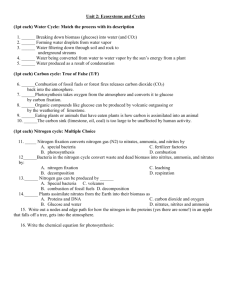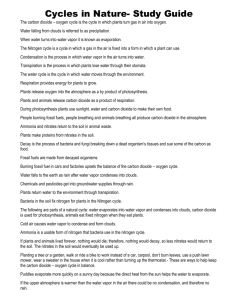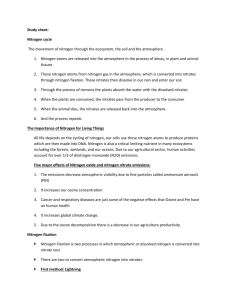The Nitrogen Cycle
advertisement
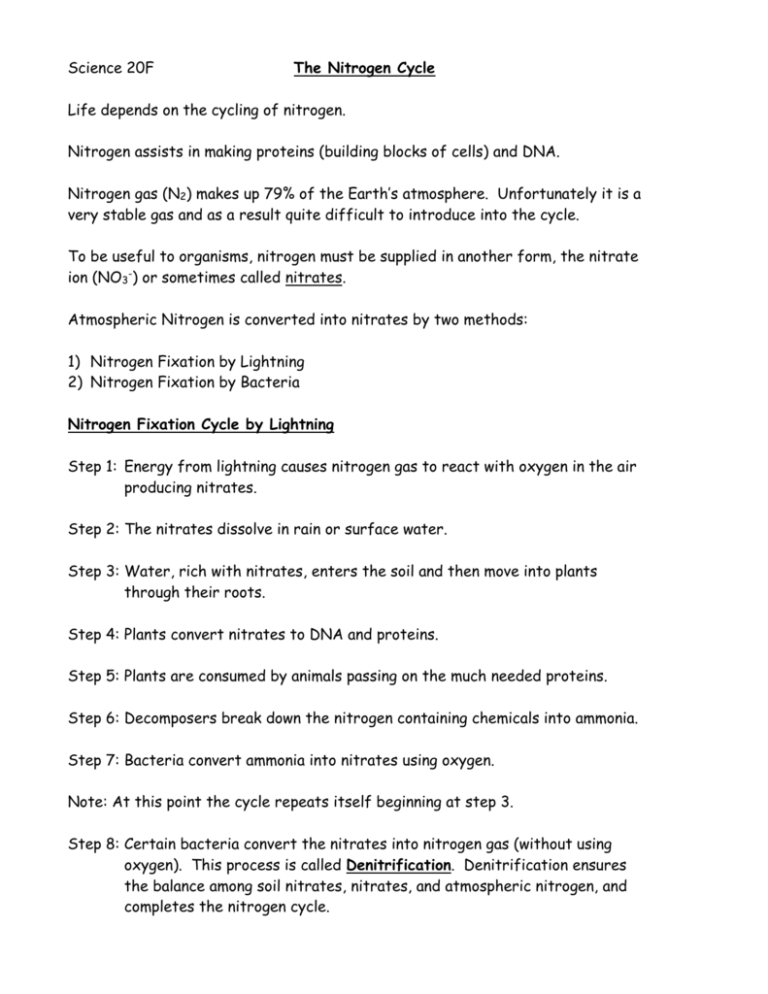
Science 20F The Nitrogen Cycle Life depends on the cycling of nitrogen. Nitrogen assists in making proteins (building blocks of cells) and DNA. Nitrogen gas (N2) makes up 79% of the Earth’s atmosphere. Unfortunately it is a very stable gas and as a result quite difficult to introduce into the cycle. To be useful to organisms, nitrogen must be supplied in another form, the nitrate ion (NO3-) or sometimes called nitrates. Atmospheric Nitrogen is converted into nitrates by two methods: 1) Nitrogen Fixation by Lightning 2) Nitrogen Fixation by Bacteria Nitrogen Fixation Cycle by Lightning Step 1: Energy from lightning causes nitrogen gas to react with oxygen in the air producing nitrates. Step 2: The nitrates dissolve in rain or surface water. Step 3: Water, rich with nitrates, enters the soil and then move into plants through their roots. Step 4: Plants convert nitrates to DNA and proteins. Step 5: Plants are consumed by animals passing on the much needed proteins. Step 6: Decomposers break down the nitrogen containing chemicals into ammonia. Step 7: Bacteria convert ammonia into nitrates using oxygen. Note: At this point the cycle repeats itself beginning at step 3. Step 8: Certain bacteria convert the nitrates into nitrogen gas (without using oxygen). This process is called Denitrification. Denitrification ensures the balance among soil nitrates, nitrates, and atmospheric nitrogen, and completes the nitrogen cycle. Nitrogen Fixation Cycle by Bacteria Step 1: Certain bacteria found in soil converts nitrogen into nitrates. The nitrogen fixing bacteria is also found in small lumps called nodules on the roots of various plants such as soybeans, peas, or alfalfa. The cycle continues similar to previous cycle beginning at step 5.
